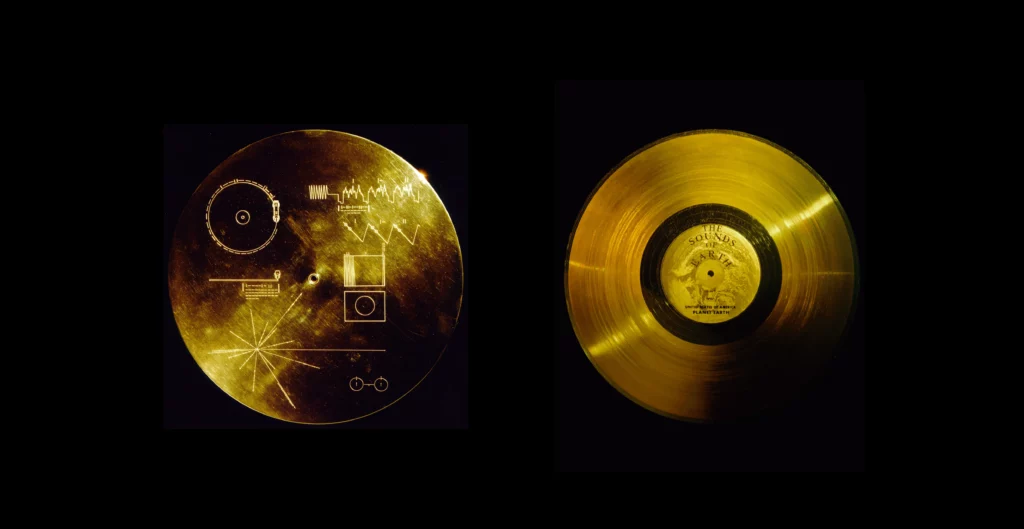In the summer of 1950, in Los Alamos, Enrico Fermi had lunch with Edward Teller, Emil Konopinsky, and Herbert York. At one point, the conversation turned to UFO sightings throughout the United States. It was a funny situation, because at that time several garbage cans disappeared in New York, and a cartoonist from the New Yorker magazine drew a cartoon accusing alien visitors of committing that crime. In a relaxed atmosphere, Fermi observed that such uninvited visits could indeed be the only common cause of two independent events. The conversation continued regarding the existence of extraterrestrial intelligence. And although scientists did not take the history of flying saucers seriously, it was then that Fermi allegedly asked his famous question: “So, where are they?”. His colleagues understood that he was talking about aliens.

Actually, Fermi’s reasoning was that our Galaxy is about 100,000 light-years across, meaning that it would take a civilization nearly 10 million years to travel that distance if it moved at a speed of one percent of speed of light. Since the Milky Way is billions of times older than the human race, any other technological civilization would have had plenty of time to colonize every habitable planetary system in the Galaxy. That is, if representatives of other intelligent species existed in sufficient numbers, they would have already reached the Earth. At the same time, we do not see them either on our planet or in the solar system. This seemed paradoxical to Fermi and many others.
Fermi’s paradox is very closely related to Drake’s formula, proposed by this astronomer in 1960. This is a mathematical formula that can be used to roughly estimate the number of civilizations (N) in our Galaxy right now:
N = nstars x nplanets x fsuitable x flife x fintelligence x fcivilization x L
nstars — is the number of stars in the Galaxy
nplanets — is the average number of planets per star
fsuitable — the share of planets potentially suitable for life
flife — is the fraction of habitable planets that actually have life
fintelligence — is the fraction of inhabited planets where intelligent life develops
fcivilization — fraction of planets with intelligent life forms that have built a technological civilization and can send messages or spacecraft into space
L — is the probability that they exist simultaneously with us
Currently, astronomers can name the approximate value of the first three components of this equation. Of these, it is easiest to determine the number of stars in the Galaxy. Thanks to Michel Mayor and Didier Queloz, we can determine the presence of exoplanets in the vicinity of stars, for which the scientists were awarded the Nobel Prize last year. Then it becomes more difficult: which planets are suitable for life? Of course, we can only compare them with the Earth, since we have never encountered any other civilization. Therefore, it is necessary to focus on the search for exoplanets that are similar to ours and are in similar conditions. Questions about life forms are a subject of constant debate. Meanwhile, there are poorly explored places in the Solar System where it could potentially exist, namely the moons of Jupiter (Europa, Ganymede), Saturn (Enceladus, Titan, Mimas) and Neptune (Triton). In the coming decades, we should focus our efforts on researching them. If we confirm twice the existence of extraterrestrial life within the solar system, it will mean that, given similar conditions, its emergence is possible. Therefore, the number two is very important to us.
Of course, the estimates of all the terms of this equation are quite rough, but we need them to move forward. In the simplest versions of the Drake equation, there is a simplification to “N is approximately equal to L”. If SETI manages to detect a signal from extraterrestrial civilizations in the near future, then we will be sure that the average L must be large.
So what attempts have SETI made to detect the signal? For this task, NASA proposes to listen to the electromagnetic signals of artificial origin, hoping that every advanced civilization should at some point create radio communication systems, similar to our own. The best known signal that has been recorded is the famous Wow message but a few years ago it was proven, that it was “sent” by a short-period comet (more precisely, its hydrogen atmosphere).
The instruments used by the SETI project include the ground-based Allen Telescope Array, several optical instruments (such as the Shane Telescope at Lick Observatory), the Keck and IRTF telescopes in Hawaii, and the Very Large Telescope in Chile. As for space missions, these are mainly the Hubble, Spitzer and Herschel telescopes. The New Horizons missions to Pluto and Cassini in orbit around Saturn, as well as the Opportunity and Curiosity rovers, also have the task of searching for life on other planets.
In addition to SETI, there is a program of METI (Messaging to Extra-Terrestrial Intelligence) to send signals to extraterrestrial civilizations. It first happened in 1972 and 1973 with the launch of Pioneer 10 and Pioneer 11. Their main mission was to explore Jupiter and Saturn, but they developed the solar escape velocity, which means that they will not return to Earth. Therefore, a plate is attached to each of the devices, which depicts people, our solar system, and directions to the 14 brightest pulsars visible from Earth. It’s like our galactic coordinates. A similar message is placed aboard two Voyager probes launched in 1977: gold-plated gramophone discs that have photos, sounds of nature, human voices, and more recorded on them.

Although the devices move at speeds of up to 60,000 km/h, in more than forty years of missions, only Voyager 1 and 2 have already flown outside the solar system. That is, such a speed is very low by cosmic standards. Pioneer 10 is moving towards the star Aldebaran, and it will reach it in 2 million years. Therefore, something faster is needed for interstellar messages. For example, the speed of light (300,000 km/h). Radio waves are the least absorbed by space dust and are the easiest to discriminate from space noise, so this method is best suited for communication. To date, many messages have been sent to the nearest exoplanets. The exoplanet orbiting the star Gliese 581 can receive our notification the soonest — the signal will reach there in 2030. If there is a civilization there that will quickly decipher it and immediately answer it, then we will receive its answer in 2050. Just: some of us will live to this moment!
If we talk about radio signals, they have been sent from the Earth for a little more than a hundred of years, since mankind began to use radio communication. That is, there is a conventional “sphere” of radio radiation around our planet with a radius of one hundred light years. Of course, at such a long distance, the signal is very weak. At this link you can listen to what you would hypothetically hear on the radio if you were moving away from Earth.
We’ve been able to send a signal into space and a man to the Moon. On the other hand, we’ve also created technologies and tools for warfare and that can destroy the environment. Will future developments protect the Earth and its inhabitants for many years to come? Or will we destroy our planet and everything that lives on it before we see extraterrestrial civilizations?

